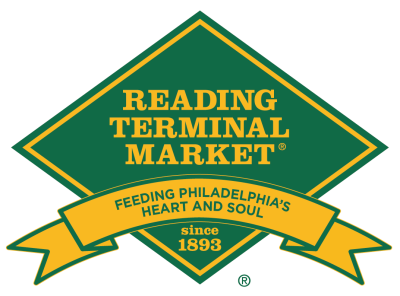PHILADELPHIA – Two Reading Terminal veterans have partnered with a South Philly favorite to open a new concept with familiar flavors at Philadelphia’s historic public…
PHILADELPHIA – Bao & Bun Studio is now open at Reading Terminal Market. The Asian-fusion street food concept will serve a variety of bao buns,…
Wilt’s Chocolate Smothered Berries serves fresh strawberries, sourced locally when in season, smothered in rich, flowing milk chocolate. Each 16 oz cup (11 oz serving)…
Reading Terminal Market Hosts World’s Best Table Tennis Athletes
Friday, Oct. 3rd | 10 AM – 1 PM | Arch Court
Reading Terminal Market’s Ice Cream Festival on Filbert is an annual outdoor, high-energy event, drawing people into the heart of Center City. A free-to-attend, pay-as-you-go,…
Lancaster Produce Co., offers high-quality seasonal produce, Amish crafts, jarred jams & pickled items such as red beat eggs, and potted plants. Owned and operated…
Visit Beck’s Cajun Cafe for a full menu of Cajun & Creole comfort food this Mardi Gras! These merchants are serving specialty menu items…
Be sure to stop by and take pictures at our designated photo area! Located by Center Court, next to Flying Monkey Bakery and across Hunger…
All About Events Bao & Bun Studio Amazulu Butcher’s Pantry By George Pizza, Pasta & Cheesesteaks Careda’s Caribbean Cuisine Contessa’s French Linens De’Village Downtown Cheese…
Disclaimer: Applicants must be 18 or older
Reading Terminal Market presents Married at the Market on Friday, February 14, 2025 at 9am in Arch Court WEDDING CEREMONY OPPORTUNITY Celebrate your love, Philly-style!…
With over 20 years of experience in the restaurant industry, and a former chef at some of Philadelphia’s most famous and respected Asian restaurants – Sampan,…
Visit https://www.phillygoatproject.org/product-page/2025-calendar for more details!
Thank you for your interest in joining the Reading Terminal Market community. All applications for space are welcome, but please understand that specialty food businesses…
PHILADELPHIA – The Reading Terminal Market Corporation, the non-profit steward of Philadelphia’s historic public Market, released its new five-year strategic plan, Feeding Philadelphia’s Heart and…
From the families behind Tommy DiNic’s, Angelo’s Pizzeria South Philly, and Pearl’s Oyster Bar. One perfect 10-inch Philly cheesesteak: thinly sliced ribeye, melted Cooper Sharp…
The event will happen in advance of the Market’s Scrapple & Apple Festival PHILADELPHIA – Reading Terminal Market will host its first-ever Scrapple Sculpting Contest…
PHILADELPHIA – Reading Terminal Market, in partnership with Pearl’s Oyster Bar and Molly Malloy’s, is hosting its annual Oyster Fest event on Thursday, November 7….
Education, Navigation, and Connection Ambassadors are Market volunteers responsible for activities related to Education, Navigation, Connection and Observation at Reading Terminal. Ambassadors will apply online…
Feeding Philadelphia’s Heart and Soul Reading Terminal Market is more than just a place to shop—it’s the heart and soul of our city, where people…
Welcome! Searching for a specific category of merchant while around the market? Click on any category below and the map will color shade the merchants…
PHILADELPHIA – LUHV Food will unveil its Vegan Deli expansion at Reading Terminal Market with a ribbon cutting on June 26 at 10:30 am. In…
Bassetts Ice Cream and 11 other Philly ice cream artisans come together for the summer’s sweetest Saturday PHILADELPHIA – One of the largest ice cream…
30 tons of waste (more than 60,000 pounds) has been diverted in the first month PHILADELPHIA – Reading Terminal Market, Philadelphia’s historic public Market and…
Thank you for supporting our black-owned businesses! Amazulu Careda’s Caribbean Cuisine DeVillage Little Marrakesh Bazaar Ma Lessie’s Chicken & Waffles O.K. Produce Really Reel Ginger…
Offering a variety of jerky, including classic, bacon, brisket and a selection of exotic jerky options.
PHILADELPHIA – Reading Terminal Market, Philadelphia’s historic public market and a 501(c)(3) non-profit, will host its 12th Annual Party for the Market on Saturday, February…
Join PHL 17 each week as we take a few minutes to meet the owners and operators of one of the coolest markets in the…
Attendees will enjoy live music, axe throwing, a beer garden, and fall flavors galore PHILADELPHIA – Harvest Festival at Reading Terminal will take over Filbert…
Young Friends Taste and Tour Thursday, May 29th | 5 – 7PM Join Us for Beer, Wine & Good Times! Our beloved public market can…
Bassetts Ice Cream and nine other Philly ice cream staples will join forces for a day of fun PHILADELPHIA – One of America’s biggest ice…
You can vote once a day, every day. Voting ends on Monday, April 15
PHILADELPHIA – For the third year in a row Reading Terminal Market is in the running for USA Today’s 10Best title of Best Public Market…
PHILADELPHIA – Reading Terminal Market has welcomed a new culinary experience for locals and visitors with City Food Tours. This guided tour showcases the best…
City Food Tours is the exclusive tour partner of the Reading Terminal Market. Come taste the Market’s history, hear stories of some of the 80+…
Looking for the perfect gift? A Reading Terminal Market gift card is a great option for anyone! Reading Terminal Market gift cards are accepted at…
You’ll see a familiar Philadelphia institution on PHL17 every week as part of our new partnership, Magras at the Market! Reporter Jayna Magras will be…
Updated: September 2022. General Reading Terminal Market strives to ensure that its services are accessible to people with disabilities. Reading Terminal Market has invested a…
Sparrow’s is a third generation family business, specializing in All Natural, Gluten Free snack foods and gifts made with the most premium ingredients. We’ll feed…
40+ Reading Terminal Market merchants deliver within a 10 mile radius through our delivery partner, Mercato. These merchants offer nationwide shipping Bassetts Ice Cream Famous 4th…
Reading Terminal Market celebrated its 130th year of operation
The streetscape outside the Market was enhanced to create a curbless “festival street” aimed at increasing public use of the 1100 block of Filbert St.

